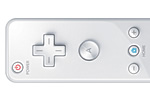Data
Guides and strategies
- Techniques Guide
- Power-up locations
- Bosses Guide
- Mini-bosses Guide
- Search View Guide
- Obstacles Guide
- Walkthrough
- Game endings
- Secrets and tips
- Game maps
Media
Metroid: Other M overview
The collaboration between Nintendo and Team Ninja has produced a unique new chapter in Samus Aran's adventures. This project has seen the return of Yoshio Sakamoto - long-time designer and co-creator of the Metroid franchise - to help produce the first Japanese-developed Metroid console title since Super Metroid.
The game is played in both third person and first person perspectives, drawing together the legacies of the classic Metroid series and the celebrated Metroid Prime saga. Once again taking advantage of the Wii's unique controller, players will direct Samus using a single Wii Remote in third-person and simply aim the controller at the screen to enter first-person mode.
We are also treated to the first Metroid title to delve into Samus' personality and inner struggles. With full voice acting and a cast of characters - both new and old - the story will etch a new chapter in Samus' life between the events of Super Metroid and Metroid Fusion. We join Samus as she reminisces of her fateful battle against Mother Brain and the loss of the infant Metroid.
Upon receiving a unique distress signal codenamed "Baby's Cry," Samus will soon find herself aboard the mysterious Bottle Ship - the site of an untold mystery where events and people from her past will collide to test her will and determination. What will she find aboard this deserted facility?
Controller overview
Metroid: Other M takes the classic platforming action of 2D Metroid and combines it seamlessly with 3D and Metroid Prime-style first-person gameplay. Players will only need a single Wii Remote to play - the Nunchuk isn't used at all during the game. The basic control scheme - known as "Normal View" - works much like the original NES Metroid, while the first-person segment, or "Search View," is activated simply by pointing the Wii Remote at the screen.
Normal View is used to guide Samus around the Bottle Ship and direct her in primary combat, while Search View allows players to search for hidden clues and attack foes with missiles. Both systems grant unique abilities, context-sensitive actions and work intuitively with practice. See below for details about each mode's commands.
Normal View
| Button | Operation |
|---|---|
 |
Press A to enter Morph Ball mode. In this mode Samus can lay bombs by pressing 1, and can jump Spring Ball-style with 2. To deploy a Power Bomb, hold 1 to charge, then release once the charge is complete. Press A again to exit Morph Ball mode. Tilt the Wii Remote vertically and hold A to use the "Concentrate" ability to restore health (when critically low) and to fully replenish missiles. |
 |
Direct Samus with the D-Pad. Release the D-Pad and press any direction quickly at the right moment to use the "Sensemove" ability and avoid enemy attacks. When the Speed Booster is available, run in any one direction for several seconds to engage the ability. |
 |
Press Plus to view the Map Screen/Subscreen. |
 |
Press 1 to fire Samus' arm cannon, or to drop bombs while in Morph Ball mode. Hold 1 to engage the Charge Beam, then release once the charge gauge is filled to release a stronger blast. Holding 1 just before performing a Sensemove evasion will cause the charge gauge to fill instantly. |
 |
Press 2 to jump. Hold any direction while jumping to perform a spin-jump. When the Space Jump is available, keep pressing 2 to remain airborne. |
Search View
| Button | Operation |
|---|---|
 |
Aim the pointer around the screen to move the target reticule. Wave the pointer to the edge of either side of the screen at the right moment to perform a Sensemove and evade an incoming attack. |
 |
Press A to fire Samus' arm cannon. Hold A to build up a Charge Beam shot, then release when the charge gauge is filled. Press A when locked onto a target to fire a regular missile, or charge your weapon first and release to fire a Super Missile. |
 |
Hold down B while aiming to lock onto targets and points of interest. Holding down B will also keep you in Search View and allow you to look around freely with the pointer. |
 |
Press Plus to view the Map Screen/Subscreen. |
 |
Same actions as A. |
Difficulty settings
Metroid: Other M offers up two difficulty settings. Initially you'll be restricted to Normal mode, but upon completing the game with a 100% item rate you'll be given access to Hard mode. Hard mode offers a different spin on the usual formula of raising difficulty level.
Along with increasing enemy health and lowering Samus' protection, not a single item expansion will be available to find. You'll be stuck with one Energy Tank, 10 Missiles and no other item expansions for the duration of the game. Samus will still be given access to all of her abilities, however. The Sensemove will be your best friend, and true skill along with copious amounts of luck is required to survive. To be frank, most people should avoid Hard mode, as the experience can be incredibly frustrating and trying at times.














